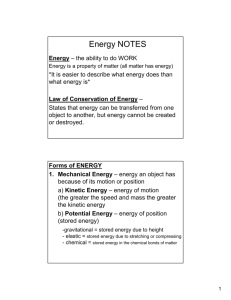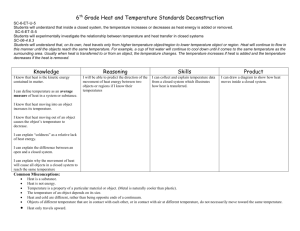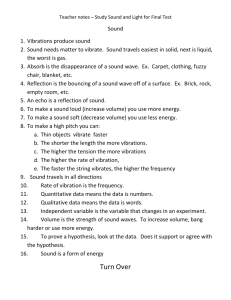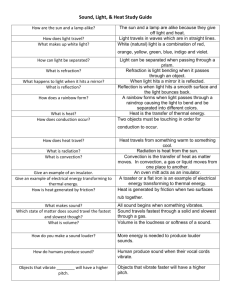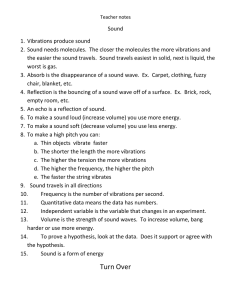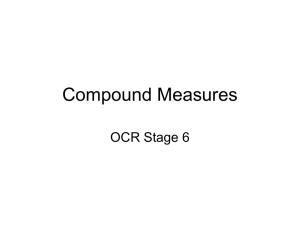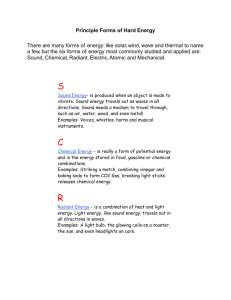chart-for-sound-light--heat-answers
advertisement
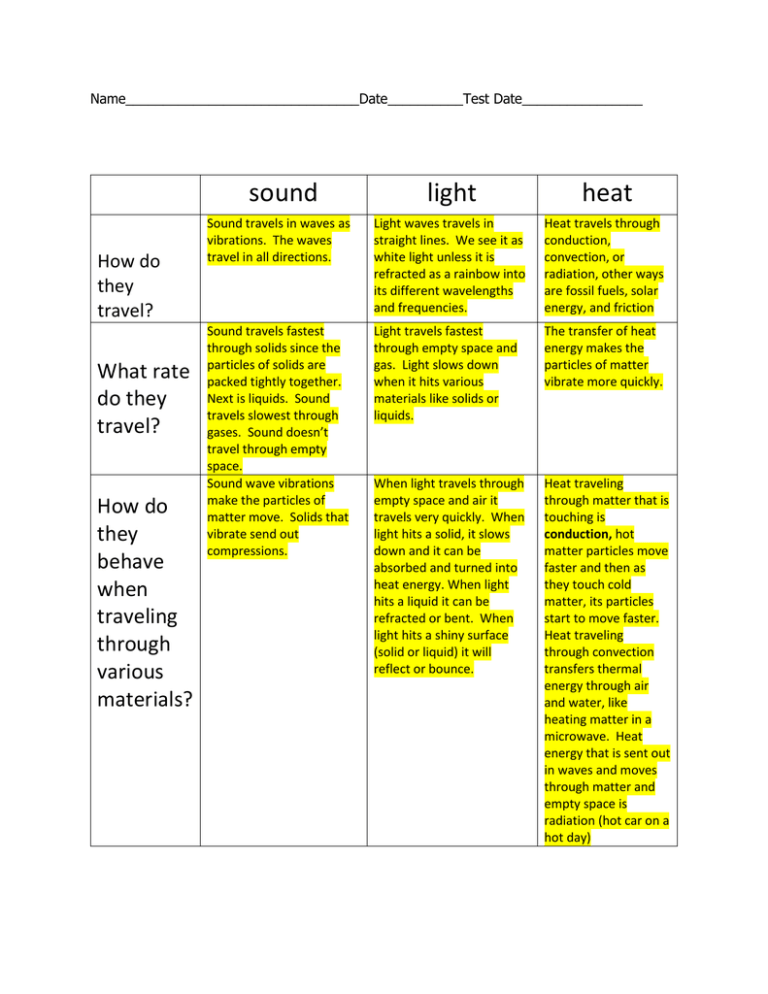
Name_______________________________Date__________Test Date________________ sound How do they travel? What rate do they travel? How do they behave when traveling through various materials? light heat Sound travels in waves as vibrations. The waves travel in all directions. Light waves travels in straight lines. We see it as white light unless it is refracted as a rainbow into its different wavelengths and frequencies. Heat travels through conduction, convection, or radiation, other ways are fossil fuels, solar energy, and friction Sound travels fastest through solids since the particles of solids are packed tightly together. Next is liquids. Sound travels slowest through gases. Sound doesn’t travel through empty space. Sound wave vibrations make the particles of matter move. Solids that vibrate send out compressions. Light travels fastest through empty space and gas. Light slows down when it hits various materials like solids or liquids. The transfer of heat energy makes the particles of matter vibrate more quickly. When light travels through empty space and air it travels very quickly. When light hits a solid, it slows down and it can be absorbed and turned into heat energy. When light hits a liquid it can be refracted or bent. When light hits a shiny surface (solid or liquid) it will reflect or bounce. Heat traveling through matter that is touching is conduction, hot matter particles move faster and then as they touch cold matter, its particles start to move faster. Heat traveling through convection transfers thermal energy through air and water, like heating matter in a microwave. Heat energy that is sent out in waves and moves through matter and empty space is radiation (hot car on a hot day)
